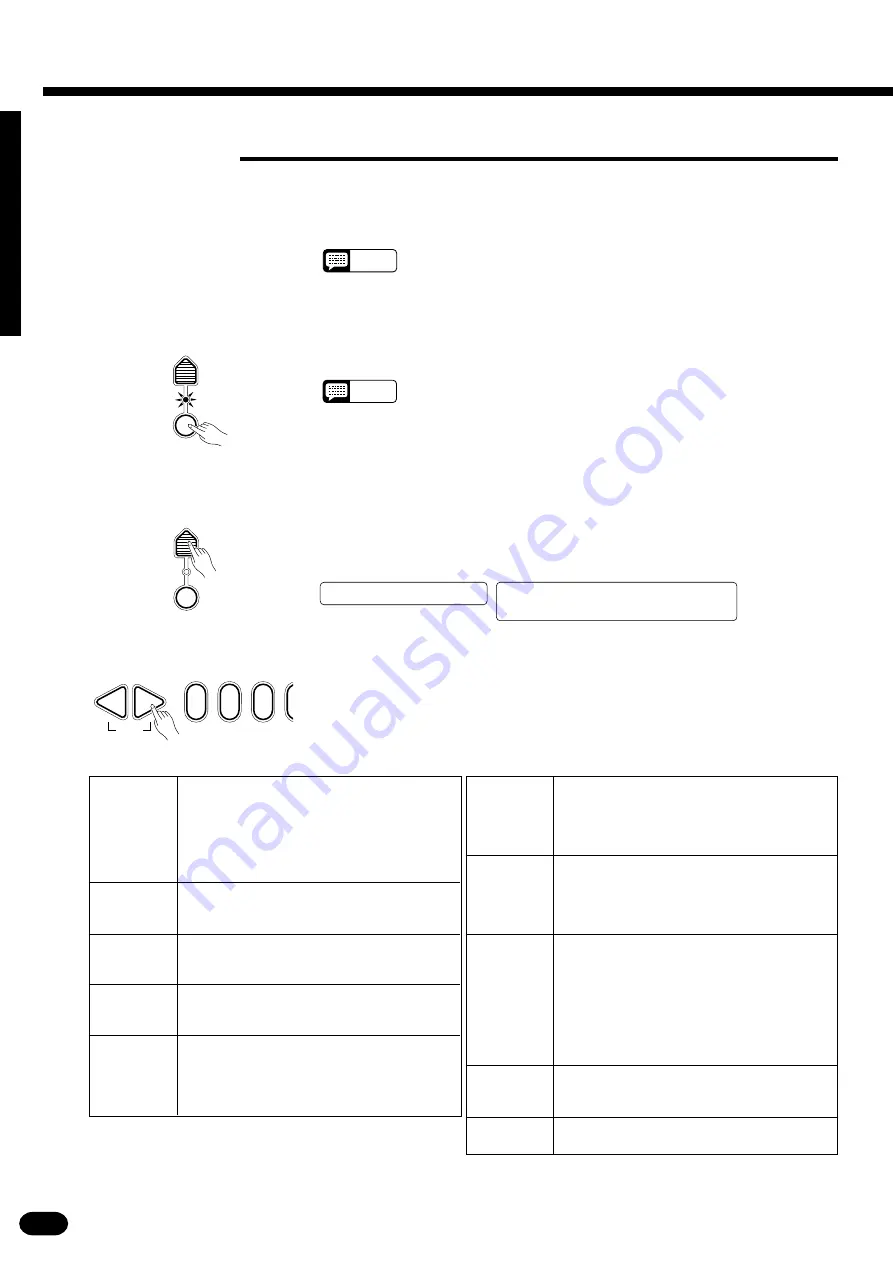
16
| | | | | | | | | | | | | | | | | | | | | | | | | | | | | | | | | | | | | | | | | | | | | | | | | | | | | | | | | | | | | | | | | | | | | | | | | | | | | | | | | | | | | | | | | | | | | | | | | | | | | | | | | | | | | | | | | | | | | | | | | | | | | | | | | | | | | | | | | | | | |
Selecting & Playing the Voices
■
Auto Harmony
Auto Harmony is used with the Auto Accompaniment feature (see page 24). It automatically adds appropriate
harmony notes to a single-note melody line you play on the keyboard. You can choose from 10 different types of
harmony that can be assigned to the right-hand orchestration parts.
NOTES
• The Auto Harmony feature cannot be used when Auto Accompani-
ment fingering mode 5 “Full” is selected (page 28).
This harmony type produces a duophonic melody
with the second voice below the melody line. If
you turn both the R1 and R2 voices on (DUAL
mode) the notes you play on the keyboard will be
played by the R1 voice, and the harmony notes by
the R2 voice. You can individually set the R1 and
R2 voices and voice parameters as required.
A parallel voice is produced a fifth above the
melody voice. As in the Duet type, the R1 and R2
voices can be set individually in the dual mode.
Similar to Duet, but the second voice is above the
melody line. The R1 and R2 voices can be set
individually in the dual mode.
This harmony type generates two voices in addi-
tion to the melody voice. Both of the harmony
voices are assigned to R2 in the dual mode.
Three or four notes are added to the melody to
produce four or five-note chords. In the dual mode
the highest and lowest voices (always one octave
apart) are assigned to R1, and the inner two or
three notes are assigned to R2.
Three harmony notes are generated to produce a
four-note chord. If both the R1 and R2 voices are
turned on (dual mode), the 1st (melody) and 3rd
notes are assigned to R1 while the 2nd and 4th
are assigned to R2.
Similar to the preceding type, but depending on
the chords played this type will sometimes pro-
duce a more colorful sound. The note assignment
in the dual mode is also different: 1st and 2nd
notes to R1, 3rd and 4th notes to R2.
Four-note chords with open voice (large intervals
between the notes). The result is a very “open”
sound. Since the harmony notes can be as much
as two octaves below the melody, avoid playing in
the lower registers. With certain voices you might
find that changing the octave (see “Octave” on
page 14) results in better sound. In the dual mode
the top (melody) note is assigned to R1 and all
three harmony notes are assigned to R2.
One note is added an octave below the melody.
In the dual mode the melody is assigned to R1
and the lower note to R2.
The notes and assignments are the same as in
the Block type, but the notes are arpeggiated.
06: 4-way
close 1
07: 4-way
close 2
08: 4-way
open
09: Octave
10: Strum
01: Duet
02: 1 + 5
03: Country
04: Trio
05: Block
The Harmony Types
Z
Turn Auto Harmony ON .........................................................................................................................
HARMONY
TYPE
HARMONY
Press the [HARMONY] button so that its indicator lights. This turns
Auto Harmony ON.
NOTES
• The HARMONY can’t be engaged when Keyboard Percussion is ON.
C
Select a Harmony Type ..........................................................................................................................
X
Press the [HARMONY TYPE] Button ....................................................................................................
HARMONY
TYPE
HARMONY
0
2
1
–
+
RESET
Use the [+] and [–] buttons, the number buttons, the data dial, or the
[HARMONY TYPE] button itself to select the desired effect.
Press the VOICE control section [HARMONY TYPE] button. The
number of the currently selected harmony type will appear on the LCD dis-
play panel.
PSR-2700
PSR-1700
Harm.=0
–1:Duet
08:Showtune
001:GrandPno
AccOff
Harm.=0
–1:Duet
Summary of Contents for PortaTone PSR-1700
Page 4: ......
Page 5: ......
Page 94: ...M D G EMI Division 1993 Yamaha Corporation VQ 64120 JDBBR0PO1 3CP ...






























